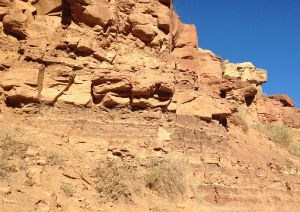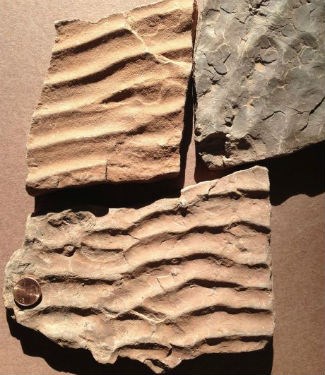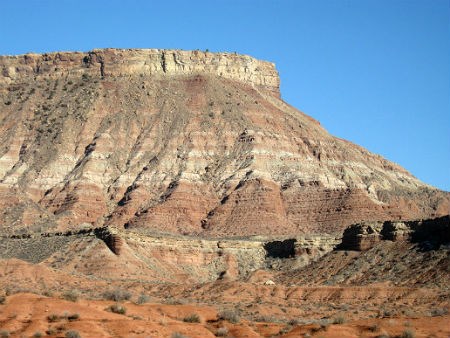
Paleogeographic map courtesy of Ron Blakey, Colorado Plateau Geosystems, Inc. 
NPS photo/Adrienne Fitzgerald ~240-250 million years ago
The Moenkopi Formation consists of thin layers of reddish-brown mudstone, sandstone, and siltstone that were deposited on broad tidal flats, in slow-moving rivers, and floodplains of a broad coastal plain. Limestone layers also occur within the Moenkopi, evidence of slightly higher sea levels and encroaching shorelines. Seawater evaporating on this broad, arid tidal flat left behind thin layers of gypsum throughout the Moenkopi.

NPS photo Learn more about ancient life of the Moenkopi

NPS photo/Adrienne Fitzgerald |
Last updated: June 13, 2015
